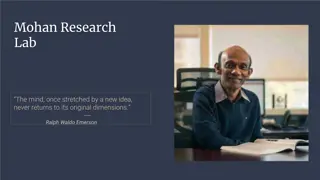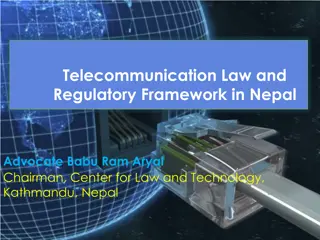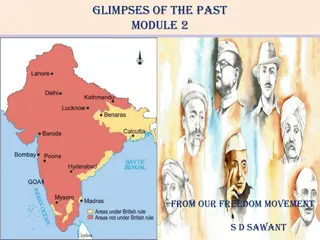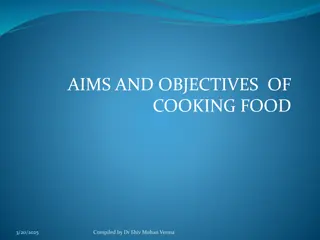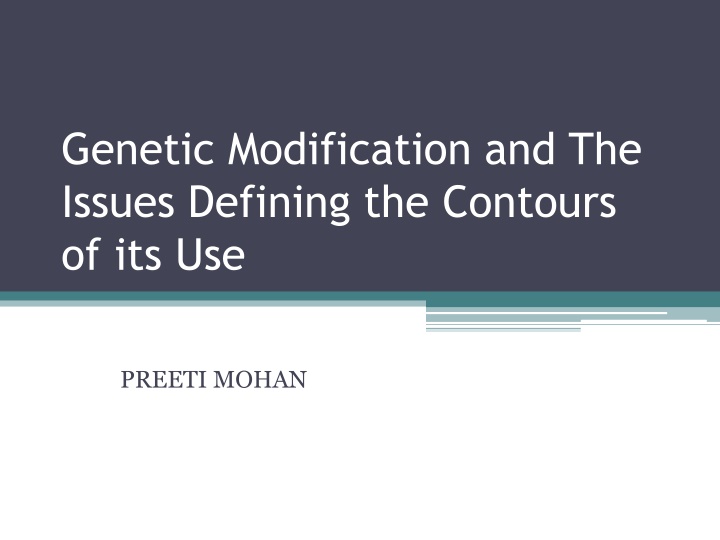
Exploring Genetic Modification and Ethical Issues in Medical Practices
Delve into the realm of genetic modification and its ethical implications in medical advancements. From designer babies to regulatory frameworks, discover the complexities surrounding genetic engineering and its impact on society and healthcare ethics.
Download Presentation

Please find below an Image/Link to download the presentation.
The content on the website is provided AS IS for your information and personal use only. It may not be sold, licensed, or shared on other websites without obtaining consent from the author. If you encounter any issues during the download, it is possible that the publisher has removed the file from their server.
You are allowed to download the files provided on this website for personal or commercial use, subject to the condition that they are used lawfully. All files are the property of their respective owners.
The content on the website is provided AS IS for your information and personal use only. It may not be sold, licensed, or shared on other websites without obtaining consent from the author.
E N D
Presentation Transcript
Genetic Modification and The Issues Defining the Contours of its Use PREETI MOHAN
INTRODUCTION Designer babies? In-Vitro Fertilization (IVF) Preimplantation Genetic Diagnosis (PGD) Clustered regularly interspaced short palindromic repeats (CRISPR Cas9)
THE UNITED STATES Council on Ethical and Judicial Affairs(CEJA) One of the 3 components of the Ethics Group of the American Medical Association. It has 2 key responsibilities- 1. To maintain and update the 165-yera old Code of Medical Ethics, through its policy development and function 2. To promote adherence to the professional ethical standards set out in the Code through its judicial function. (= appellate jurisdiction over physician members appeals of ethics- related decisions made by state and speciality medical societies)
THE UNITED KINGDOM HUMAN FERTILIZATION AND EMBRYOLOGY AUTHORITY (HFEA) The only authority We have the power by law to grant licences for research projects involving human embryos. Under the Human Fertilisation and Embryology (HF&E) Act 1990, research projects can be carried out under the following conditions: 1. Each research project must be carried out under a licence granted by the HFEA in suitable premises. 2. The HFEA, before granting a licence, must be satisfied that the research fulfils at least one of the purposes set out in the Act (see below) and that the use of human embryos is necessary. 3. The people donating their eggs, sperm or embryos for research must provide consent to do so. 4. No embryo created or used in research can be transferred to a woman. 5. The embryos must not be allowed to develop in the laboratory beyond 14 days after fertilisation.
International Covenant on Economic Social and Cultural Rights Article 12 1. The States Parties to the present Covenant recognize the right of everyone to the enjoyment of the highest attainable standard of physical and mental health. 2. The steps to be taken by the States Parties to the present Covenant to achieve the full realization of this right shall include those necessary for: (a) The provision for the reduction of the stillbirth-rate and of infant mortality and for the healthy development of the child; (b) The improvement of all aspects of environmental and industrial hygiene; (c) The prevention, treatment and control of epidemic, endemic, occupational and other diseases; (d) The creation of conditions which would assure to all medical service and medical attention in the event of sickness.
Article 15 1. The States Parties to the present Covenant recognize the right of everyone: (a) To take part in cultural life; (b) To enjoy the benefits of scientific progress and its applications; (c) To benefit from the protection of the moral and material interests resulting from any scientific, literary or artistic production of which he is the author. 2. The steps to be taken by the States Parties to the present Covenant to achieve the full realization of this right shall include those necessary for the conservation, the development and the diffusion of science and culture. 3. The States Parties to the present Covenant undertake to respect the freedom indispensable for scientific research and creative activity. 4. The States Parties to the present Covenant recognize the benefits to be derived from the encouragement and development of international contacts and co-operation in the scientific and cultural fields.
CASE STUDY What choices should we be able to make about designer babies? A citizens' jury of young people in South Wales. -Rachel Iredale The use of the technology: 1. To prevent inherited diseases 2. To save the life of an existing child with a serious medical condition (saviour siblings) 3. For non-medical reasons such as sex selection
HOPES In an ideal future I hope that designer baby technology will allow to: FEARS If things go wrong the following might happen: Be able to have children, if they so wished People would design babies for selfish reasons, i.e. not to prevent illness or suffering Make informed reproductive choices, free from all outside pressure Eugenics might come to dominate policy Have equal rights and opportunities in life, regardless of personal impairment Saviour siblings who failed to save might be rejected Avoid the suffering of children with inherited conditions Accidental damage might be caused to designed babies Live longer, healthier lives There could be future imbalance between the sexes Stay together as families fir longer if the tensions sometimes caused by serious inherited conditions could be avoided An obsession with the quest of perfection would rise Have advance knowledge of their unborn child s health, and be prepared There could be increased social pressure to design Have access to designer baby technology where appropriate, regardless of cost or where they live There could be prejudice and discrimination against non-designed babies
The Result and Final Recommendations The term 'designer baby' was not useful "Acceptance of designer baby technology was purpose- specific" They suggested that the Human Fertilization and Embryology Authority should have members under 20 The regulator should set and enforce quality of care standards for each clinic and that each application to 'design' a baby should be considered individually by the regulator (by applying standard rules) to allow for exceptional cases
Inherited condition Least controversial Potential parents should be allowed to choose to make use of assisted reproductive technologies to prevent inherited conditions from being passed on and to prevent serious suffering The jury was evenly divided on whether the permission should depend on the severity of the condition
For some it important to prevent parents from designing babies for frivolous reasons For others the judgement of the parents concerned was the determining factor A minority of the jury believed that the these technologies were an unacceptable interference with human life, regardless of the severity of the genetic disease . These would inevitably undermine the uniqueness of each individual and encourage the idea that some people are inherently better than others
Saviour siblings Majority supported the principle of designing babies for the purpose of curing existing children with serious medical conditions. It was felt that parents were unlikely to discriminate in any adverse way between their children on the basis that were or were not designed for a particular purpose Sex Selection Most controversial The majority opposed to designing babies for non-medical reasons such as selecting the sex of a future child. Whilst the relief of suffering either of the designed baby or a sibling may be sufficient justification for interfering with natural processes, to do this for other reasons (such as family balancing) is to imply that the designed child is a possession of the parent.
REFERENCES: Rachel Iredale, What choices should we be able to make about designer babies? A Citizens Jury of young people in South Wales (2006) 9(3) Health Expectations <http://onlinelibrary.wiley.com/doi/10.1111/j.1369- 7625.2006.00387.x/abstract> accessed 14 July 2016 <http://www.hfea.gov.uk/> accessed 18 July 2016 <http://www.ohchr.org/EN/ProfessionalInterest/Pages/CES CR.aspx> accessed 18 July 2016 <http://www.ama-assn.org/ama/pub/about-ama/our- people/ama-councils/council-ethical-judicial-affairs.page> accessed 18 July 2016 <http://www.nature.com/news/where-in-the-world-could- the-first-crispr-baby-be-born-1.18542> accessed 18 July 2016


